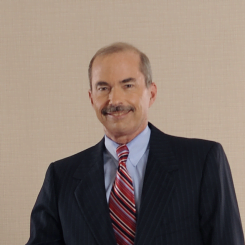When Bankruptcy Law and Environmental Law Collide: Maryland District Court Holds That Confirmed Chapter 11 Plan Discharged Cleanup Costs Without Any Payment
Filing a case under Chapter 11 of the United States Bankruptcy Code can be a powerful tool for a business facing crushing liabilities. Not only does the filing of a Chapter 11 invoke an automatic stay of all lawsuits pending against the business, but it affords the business an opportunity to discharge those liabilities by obtaining confirmation of a plan of reorganization that provides for payment of only a fraction of the total amount owed. As an October 12, 2021 decision of the United States District Court for the District of Maryland demonstrates, a business that obtains confirmation of a Chapter 11 plan may even be able to avoid liabilities entirely without having to pay anything.
In 68th Street Site Work Group v. Airgas, Inc., et al., the plaintiff who had incurred environmental cleanup costs under a 2017 Consent Decree with the EPA and the State of Maryland, sued Schumacher & Seiler for contribution because Schumacher had disposed of hazardous materials on the contaminated site. The site was last used in the 1970’s. The EPA and the State had commenced remediation in the 1980’s and began issuing notices to potentially responsible parties in 1999.
Schumacher & Seiler filed a motion for summary judgment. It contended that any liability that it might have had for contaminating the site had been discharged by a Chapter 11 plan confirmed in December of 1992.
The Bankruptcy Code provides, with certain exceptions, that confirmation of a plan “discharges the debtor from any debt that arose before the date of such confirmation.” The critical issue, then, was whether Schumacher & Seiler’s debt arose before December 1992.
The District Court noted that courts have used three approaches in determining when a debt arose. Under the “right to payment” approach, which the court characterized as the least deferential to the bankruptcy policy of affording debtors a fresh start, if the creditor had no right to be paid by the debtor at the time of plan confirmation, then the debt has not arisen yet and is not discharged. Under the intermediate “fair contemplation” approach, even if the creditor does not yet have a right to be paid by the debtor at the time of confirmation, the debt has arisen if the debtor’s liability “can be fairly contemplated by the parties” at the time of the debtor’s bankruptcy. Under the most deferential “underlying acts,” or “conduct” approach, a claim exists “so long as the underlying…act occurred prior to the debtor’s bankruptcy, whether or not the creditor has a right to be paid by the debtor at the time of the bankruptcy filing or the parties can fairly contemplate that the debtor may have an obligation to pay.
Under either the “right to payment” approach or the “fair contemplation” approach, the plaintiff’s claim against Schumacher & Seiler had not arisen when its plan was confirmed. The plaintiff had not incurred any remediation costs at the time and the EPA and the State did not begin identifying potentially responsible parties until years later. However, Schumacher & Seiler had not disposed of any hazardous materials at the site since the 1970’s so the underlying act that gave rise to liability occurred well before Schumacher & Seiler’s bankruptcy filing.
The District Court followed the “underlying acts” or “conduct” approach as the approach that most respected the intent of the Bankruptcy Code. Confirmation of a plan discharges “debts.” The Bankruptcy Code defines “debt” as “liability on a claim.” “Claim,” in turn, is defined as “a right to payment, whether or not such right is reduced to judgment, liquidated, unliquidated, fixed, contingent, matured, unmatured, disputed, undisputed, legal, equitable, secured, or unsecured.” This broad definition cannot be reconciled with the requirement of the “right to payment” approach that the creditor have a right to be paid at the time of a debtor’s bankruptcy filing or the requirement of the “fair contemplation” approach that the parties fairly contemplate the debtor’s liability.
The District Court relied, in part, on Circuit Court precedent. The United States Court of Appeals had followed the “underlying acts” or “conduct” approach in multiple cases, albeit not in the context of liability for environmental cleanup costs. The plaintiff argued that following that approach in the context of liability for environmental cleanup costs undermined CERCLA’s goal of polluter accountability. Quoting from a decision of a Virginia district court, the Court rejected the notion that when a claim arose for bankruptcy purposes could vary depending on the nature of the claim. The Virginia court had said that “Whether a claim arises requires consideration of the substantive law from which the claim arises, not of the bankruptcy code itself; but when a claim arises for bankruptcy purposes is determined according to bankruptcy law, not according to the substantive law creating the claim.”
Because all of the acts that gave rise to Schumacher & Seiler’s possible liability for cleanup costs occurred well before its Chapter 11 plan was confirmed and it was discharged from all debts that arose before confirmation, Schumacher’s liability to the plaintiff had been discharged. Summary judgment was granted to Schumacher & Seiler.

